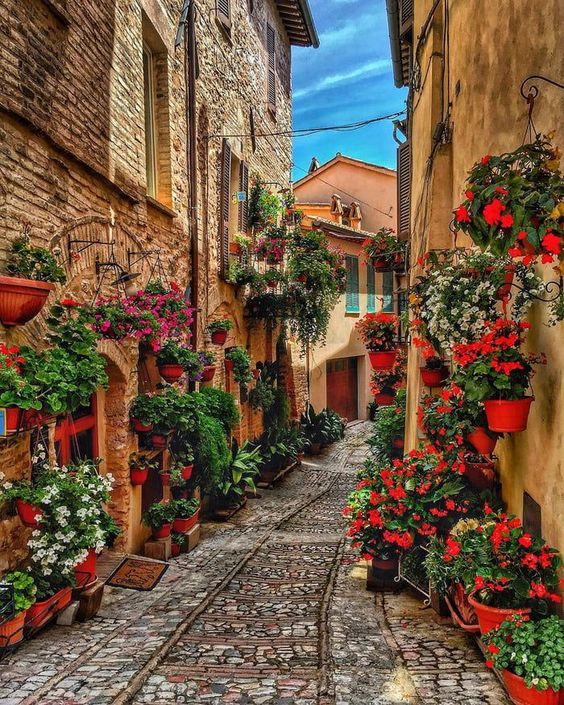
Spello (in Antiquity: Hispellum) is an ancient town and comune (township) of Italy, in the province of Perugia in eastern-central Umbria, on the lower southern flank of Mt. Subasio. It is 6 km (4 mi) NNW of Foligno and 10 km (6 mi) SSE of Assisi.
The old walled town lies on a regularly NW-SE sloping ridge that eventually meets the plain. From the top of the ridge, Spello commands a good view of the Umbrian plain towards Perugia; at the bottom of the ridge, the town spills out of its walls into a small modern section (or borgo) served by the rail line from Rome to Florence via Perugia.
Source:
Spello, a jewel medieval village of Umbria
Spello (Hispellum in Latin) is a small Italian town in the province of Perugia (Umbria) located at the foot of Mount Subasio.
It was founded by the Umbrians to then be called “Hispellum” in Roman times. It was declared by Augustus “Splendidissima Colonia Julia”.
Spello retains the signs of its long Roman and Lombard history. After the fall of the Roman Empire it was destroyed by the Goths of Totila and became part of the Lombard Duchy of Spoleto.
Subsequently in the 12th century it became an independent municipality and experienced an era of intense artistic activity in which the city was enriched with Renaissance masterpieces by Pinturicchio, Perugino and Nicolò di Liberatore known as the Alunno.
Spello is one of the most enchanting and strategic villages in Umbria, an obligatory stop for those who want to visit the region, being located a few kilometers from cities such as Assisi, Perugia and Spoleto.
It overlooks the wonderful Umbrian plain and is surrounded by centuries-old olive groves from which plants produce a high-quality, high-quality oil.
